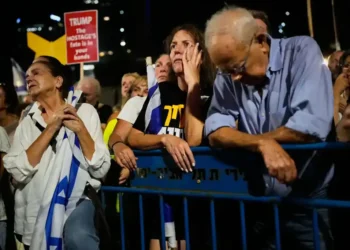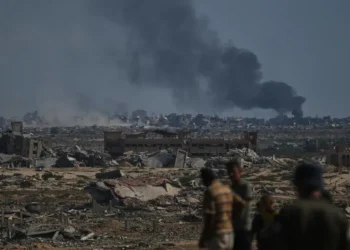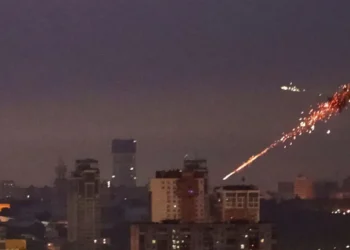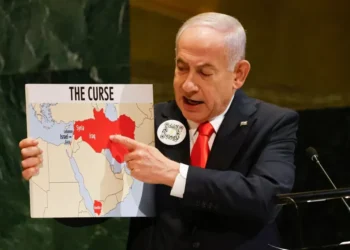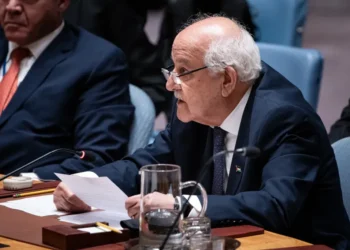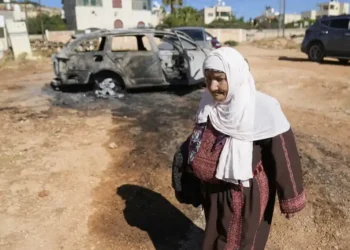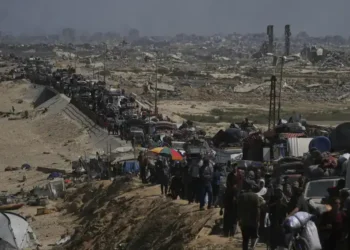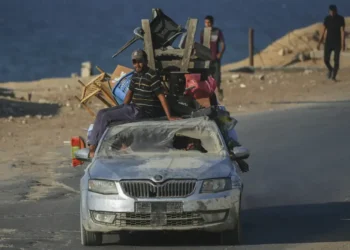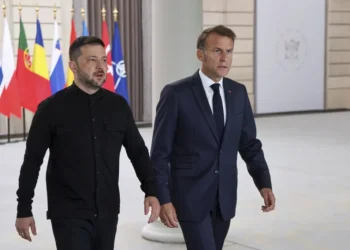Under Fire and Cornered: Iran’s Supreme Leader Faces a Historic Crossroads
By AP – Rewritten for a modern news blog audience
Ayatollah Ali Khamenei has survived more than three decades of uprisings, reform movements, and international sanctions. But the 86-year-old Iranian supreme leader is now facing what may be the biggest challenge of his rule — and it’s coming not from within, but from above.
Israel’s escalating air campaign has punched holes through Iran’s defenses, targeting top military commanders and nuclear facilities with apparent impunity. And it’s gotten personal. Israeli Defense Minister Yoav Gallant recently declared that Khamenei himself “cannot continue to exist,” a direct threat aimed at the heart of the Islamic Republic.
Now Khamenei is staring down a brutal dilemma:
Does he escalate and risk even heavier Israeli strikes — or seek diplomacy that could mean walking back Iran’s prized nuclear ambitions?
In a fiery video address on Wednesday, he vowed defiance, declaring that “the Iranian nation is not one to surrender.” He also warned that if the U.S. gets involved, it will suffer “irreparable damage.”
A Revolutionary Survivor
Khamenei’s rise in 1989 wasn’t a sure thing. He was a relatively low-ranking cleric taking over from the larger-than-life founder of the Islamic Republic, Ayatollah Ruhollah Khomeini. Lacking Khomeini’s religious credentials and charisma, Khamenei’s leadership was questioned early on.
But he didn’t just survive — he remade the system in his image.
Khamenei cemented clerical rule in Iran and transformed the once-modest Revolutionary Guard into the country’s most powerful institution. The Guard now controls not just elite military units and Iran’s ballistic missiles, but also an expansive business empire that dominates much of the economy.
Crucially, he backed the Quds Force, which stitched together Iran’s “Axis of Resistance” — a network of proxies and allies stretching from Yemen to Lebanon. This alliance helped Iran wield enormous influence across the Middle East for years.
In return, the Guard and its regional partners became Khamenei’s loyal enforcers.
Crushing Dissent at Home
Khamenei’s reign has been marked by repeated waves of internal unrest — and by his willingness to crush them.
In the late ’90s and early 2000s, a reform movement gained traction, advocating for more democratic freedoms and curbing clerical power. Khamenei responded by empowering hard-line institutions to shut it down.
When protests flared again — over disputed elections in 2009, economic hardships in 2017 and 2019, and the 2022 death of Mahsa Amini in morality police custody — security forces responded with brute force. Hundreds were killed, many more were jailed, and reports of torture and sexual assault in detention centers shocked the world.
While the regime occasionally loosened social restrictions to ease tensions, the underlying grievances — authoritarian rule, corruption, and a battered economy — remain unresolved.
From Isolation to Regional Power
When Khamenei first took power, Iran was licking its wounds from an eight-year war with Iraq and was largely isolated.
But he gradually turned Iran into a regional heavyweight. A major turning point came in 2003, when the U.S. toppled Saddam Hussein, opening the door for Iran-aligned Shiite parties and militias to dominate Iraq’s new government.
That opened the floodgates. Iran’s influence spread through Lebanon’s Hezbollah, Syria’s Bashar Assad, Hamas in Gaza, and Yemen’s Houthi rebels — all forming the so-called “Axis of Resistance.” By 2015, Iran’s presence stretched across the region, with proxies positioned on Israel’s doorstep.
But That Power Is Rapidly Unraveling
The tide has turned dramatically over the past two years.
The October 7, 2023, Hamas attack on southern Israel triggered a massive Israeli counteroffensive in Gaza — one that didn’t stop there. Israel shifted from containment to destruction, making the defeat of Iran’s regional allies a top priority.
Hamas has been severely weakened. Hezbollah, long seen as untouchable, suffered surprise attacks — including a bizarre but devastating infiltration using booby-trapped walkie-talkies. In Syria, the unthinkable happened: Bashar Assad was overthrown by Sunni rebels. Damascus is now under the control of a government openly hostile to Iran and Hezbollah.
Meanwhile, Israeli air raids continue to hit targets deep inside Iran, killing key figures in the military and intelligence establishment. The skies that once symbolized Iran’s reach are now symbols of its vulnerability.
The Clock Is Ticking
Khamenei’s decades-long project — to turn Iran into a dominant, nuclear-armed regional power — is at risk of collapsing.
His next move may decide whether Iran doubles down and escalates into a broader war with Israel — potentially drawing in the United States — or whether he accepts painful concessions to avoid further devastation.
Either way, the supreme leader is facing a defining moment. And this time, slogans and crackdowns may not be enough.
Source: AP News – Under attack from Israel, Iran’s supreme leader faces a stark choice


